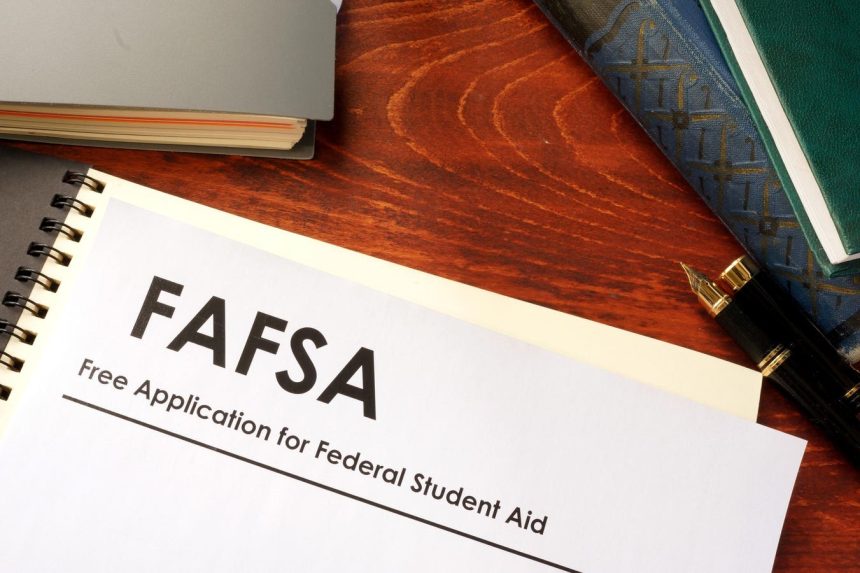The Free Application for Federal Student Aid is the main way for families to access various scholarships, grants and federal student loans. This is especially true for families with lower incomes who may be able to qualify for aid to pay for school, including federal Pell Grants. However, high-income families should also fill out the FAFSA to find out if they’re eligible for aid and make sure they have access to federal student loans, if they need them.
Unfortunately, delay after delay has turned this application cycle’s financial aid process into a huge and complicated mess. First, new updates to the form for the 2024-25 academic year meant it wasn’t available to students in October 2023 like normal. Instead, the launch of the new FAFSA was pushed to late December of last year instead.
Even then, the FAFSA had a myriad of glitches and was only available off and on for several weeks. Fixes were made to make the FAFSA portal, but it still wasn’t available 24/7 until at least Jan. 8, 2024.
Additional delays have also made it so colleges and universities won’t receive FAFSA information from applicants until the second half of March 2024. This is going to create major timeline issues for families since, historically, students need to make their final college acceptance decisions by May 1 — and financial aid typically plays a big role.
If colleges are just now on the cusp of receiving FAFSA information from the U.S. Department of Education, families will be stuck waiting weeks or months from now to find out about student aid so they can choose a school and start making plans. Or even worse, they may make a decision without knowing the true cost of college.
In the middle of this mess, the FAFSA form also updated its calculation for federal student aid to a new formula altogether — the Student Aid Index. This calculation replaces the Expected Family Contribution that was used in its place with previous versions of the FAFSA.
While the SAI isn’t that different from the EFC, it is expected to create a new list of people who do or don’t benefit due to some changes in the way federal student aid eligibility is determined. This means that, on top of all these delays, some families may wind up blindsided or at least surprised by the amount of aid they can receive (or not receive) for the upcoming academic year.
Bigger FAFSA Issues Await
According to a February 27 Department of Education press release, more than 4.7 million families still managed to submit the FAFSA for the 2024-25 academic year by that date. That definitely sounds like a lot of students, but it falls significantly short of the 7.6 million people who filled out the FAFSA for the 2023-24 academic year by the end of February 2023. That’s a 38% drop in families filling out the FAFSA so far compared to prior years.
Additionally, more than 17 million students and their families typically submit the FAFSA for any given academic year. This means the current number of applicants is a far cry a typical year without all these delays.
Unfortunately, families are the ones who will be missing out if they don’t get the FAFSA in on time — or at all. This is always true for families who need to access federal student aid to pay for college, but it’s especially relevant this year due to the implementation of the SAI. After all, the new SAI calculation is expected to significantly increase access to federal Pell grants for the 2024-25 academic year.
Obviously, Pell grants for low-income students are a much-needed lifeline that can make higher education a possibility for those who might otherwise be left behind. These grants are also limited to students and families who fill out the FAFSA, and they are not available through any other means. Of course, the FAFSA also opens eligibility for federal student loans, which bridge the gap for families of nearly all income levels to pay for school. Once again, no FAFSA equals no access to federal student loans.
FAFSA Delays: What Happens Next?
Unfortunately, unimpressive FAFSA completion numbers have the potential to impact an entire generation of students. While some will submit the FAFSA late or find other ways to pay for college, research from the National College Attainment Network shows a correlation between FAFSA completion and college attendance.
In fact, high school seniors who fill out the FAFSA are 84% more likely to enroll in college directly after graduation. On the flip side, students and families who don’t fill out the FAFSA are less likely to attend college. NCAN data also shows that the disparity of those not filling out the FAFSA and not attending college after high school is even more pronounced for families in the lowest income quintile.
What happens next depends on how many more students fill out the FAFSA through the remainder of the school year and the summer. After all, the actual deadline to fill out the FAFSA for the 2024-25 academic year isn’t until June 30, 2025.
Still, filling out the FAFSA late or even after college starts can create huge issues for families trying to budget for college costs. After all, you can’t use student aid eligibility as a factor when choosing a college or university if you don’t have any financial aid award letters from schools to compare.
If you haven’t filled out the FAFSA this year, your best bet is doing it now while you still have time. That way, you can get a handle on what you might owe for various institutions based on the new SAI formula. Filling out the FAFSA also lets you borrow for school with federal student loans and may give you access to Pell Grants and other scholarships.
Read the full article here
















